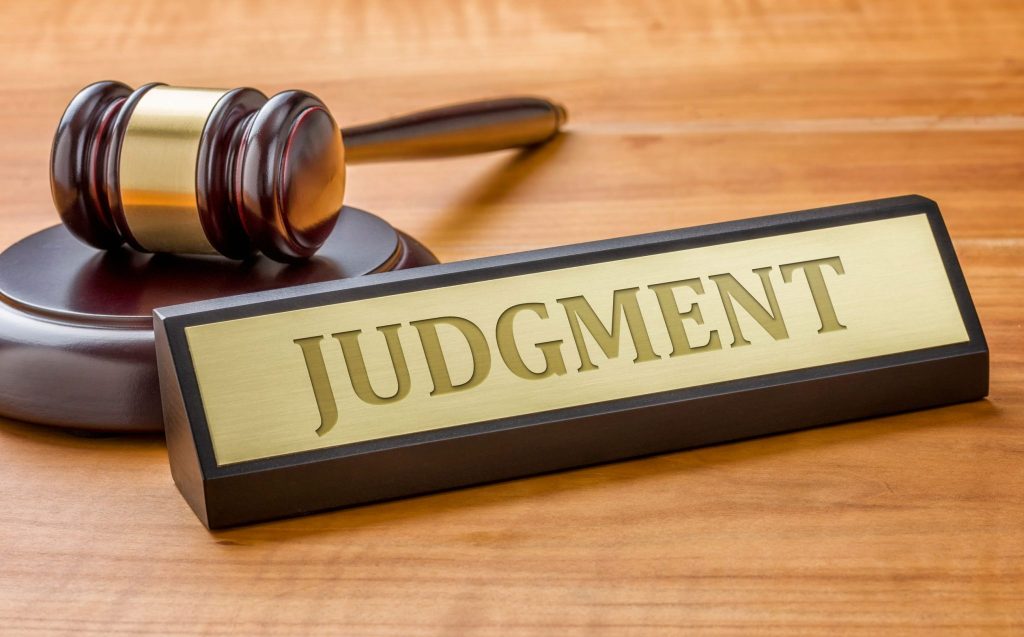Frequently the press, when reporting on legal proceedings, will use loose or inaccurate language surrounding trial-court activities – particularly when describing the jury’s and judge’s roles in a lawsuit. “Today the jury delivered its judgment,” “the trial court found the jury’s verdict,” and “the trial judge entered a verdict today on the jury’s decision” are common examples.
Worse, many lawyers will use the same loose or inaccurate language. Readers will not understand or appreciate the significance of trial-court activities unless they have some background knowledge.
Fact finding by a jury.
Jury’s play a role of “fact finding” in a civil lawsuit. For instance, “Was the light green or red?”, “Did defendant know its actions could harm plaintiff?” or “Is defendant liable for breaching a contract and how much money must it pay?” are all questions for a jury to decide. The trial judge will oversee the trial and the introduction of evidence to the jury so that the jury can do its fact-finding work. The trial judgment is not supposed to interfere with or influence the jury’s fact-finding role. At the conclusion of trial, the trial judge will give to the jury a “jury charge” to answer. The charge contains various questions and instructions on how the jury should consider the evidence presented at trial. The jury will retire to the jury room, elect a “foreman” or “presiding juror,” read through the charge, and answer the various questions therein. Once answered and given to the trial judge, the jury charge has transformed into a “verdict” – an English word derived from Latin, meaning “spoken truth.”

Following the verdict, the trial judge will question the jury to ensure the verdict accurately represents their decision-making process. Next, over many days, weeks or months, the trial court will entertain “post-verdict” litigation wherein the plaintiff’s and defense counsel will make arguments as to the verdict’s meaning and what sort of decision the trial judge should make (specifically, should “render”) because of the verdict. This litigation includes the filing of, hearing of, and arguing of motions like “motions for judgment,” “motions for new trial,” “motions to disregard jury findings,” and “motions for judgment notwithstanding the verdict.” At the conclusion of this post-verdict litigation, the trial court will “render a judgment on the verdict.”
Finding vs. Rendering.
The key words in the foregoing process are “finding” and “rendering.” Jury’s do the finding; trial judges do the rendering. After the jury’s verdict (that is, after their collection of findings), the trial court will render some kind of judgment on the verdict – and the trial judge may have “disregarded” certain findings before such rendering. In summary, the word rendering describes the trial judge’s role of thinking through the verdict, hearing various arguments about that verdict and about the trial itself, and making a judicial decision accordingly.
Words like “entering,” “submitting,” or “filing” frequently appear when reporters or lawyers describe the jury-trial activities. In certain states, those terms are meaningful and usually describe actions taken by court clerks (e.g., they “enter” verdicts on the lawsuit’s docket sheet) or by the parties’ lawyers (e.g., they “file” paperwork with the court clerks throughout the process). But the key words are “finding” and “rendering”; these words seem to be used in all 50 states when accurately describing trial-court proceedings.
Fact finding by a trial judge.

To complicate matters a little, different terminology comes into play when the parties have a “bench trial” – meaning they have foregone a jury and ask the trial judge to make the findings. Trial judges do not give “verdicts”; rather, they give “findings of fact and conclusions of law” at the end of a bench trial. Based upon those findings and conclusions, the trial court will entertain “post-trial” litigation wherein the plaintiff’s and defense counsel will make arguments as to the findings and conclusions’ meaning and what sort of decision the trial judge should render accordingly.
Judgments, and appealing them.
“Judgments” rendered on verdicts, or on findings of fact and conclusions of law, are very important. Judgments may direct that one party (usually the defendant, but sometimes the plaintiff) pay money damages to the other party with pre- and post-judgment interest thereon. They may direct that one party (usually the defendant, but sometimes the plaintiff) pay attorney’s fees to the other party. Also, judgment may direct when and how one party can begin collecting on the judgment, such as by using court powers to obtain the other party’s real property or personal property in order to own it, or to sell it off. The collections on a judgment are efforts to “satisfy the judgment.” Once a party has obtained the monetary relief to which the judgment entitles it, the judgment is “satisfied” and can no longer be used as an instrument to collect money or property from the other party.

What if the party suffering under the judgment wants to appeal it – so that it does not have to pay money to the other party, or does not have to obey the injunction in the judgment? Unless the judgment is superseded (a topic for another on-line discussion), the party suffering the judgment must perform it even though the party is appealing it.
If the “judgment creditor” (the party entitled to monetary or injunctive relief in the judgment) obtains money or other property from the “judgment debtor” (the party that must provide the money or perform the injunctive action) during the appeal, the judgment creditor must be careful with whatever value it has obtained. If the appeal “reverses” the judgment, then the judgment creditor becomes liable to the judgment debtor for the monetary or injunctive loss suffered by the debtor during the appeal. In this scenario, the judgment creditor is liable to the judgment debtor under a fair market value standard. For instance, if the debtor provided land to the creditor valued at $2 million at the time of collection, and the judgment became reversed on appeal, then the creditor would owe $2 million to the debtor – even if the land had depreciated in value to $1.5 million during the appeal.
Judgments on appeal.
A whole new set of terminology about judgments arises during the appellate process. In brief summary, appellate courts “deliver opinions.” But those written opinions contain results that must be described. Therefore, appellate courts either “reverse a trial court’s judgment” (or a lower appellate court’s judgment), “remand for new trial,” or “affirm a trial court’s judgment” (or a lower appellate court’s judgment). Often, the reversing of a judgment is described as “reversing and rendering” – meaning, reversing a lower court’s judgment and rendering a new one in its place.
Conclusion.
Using proper terminology for verdicts, judgments, and the many legal proceedings surrounding them helps lawyers and their clients to communicate most effectively. But to learn this proper terminology, clients must spend some time learning general trial procedures and stages. Fortunately, their knowledge will be sufficient if they simply learn the high-level trial procedures surveyed above.
